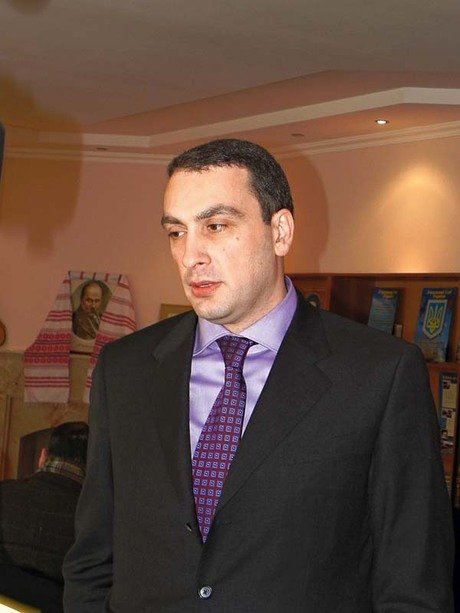Aside from the Baltics, Ukraine and Georgia still stand out among the 15 former Soviet republics as the most democratic and Western-oriented.
During the past two decades both countries have at times followed similar paths. Ukraine and Georgia suffered through the authoritarian regimes of Leonid Kuchma and Eduard Shevardnadze, respectively and both responded with revolutions – Ukraine’s Orange in 2004 and Georgia’s Rose in 2003 – in attempts to secure more democratic and prosperous futures.
However, almost a decade after those peaceful uprisings brought pro-Western leaders to power, the two countries are now moving away from each other. In Ukraine and abroad, sentiment is high that Ukraine’s Orange Revolution never delivered what it promised – and now the country is regressing under President Viktor Yanukovych, the villain of the 2004 revolution.
By contrast, Georgia basks in international praise for combating corruption and red tape, making the tiny Caucasus nation of 4.6 million one of the world’s most business-friendly under President Mikheil Saakashvili, who nonetheless appears to have lost some of his luster and popularity in his second term.
Yet when it comes to bilateral economic relations between the allies, Ukraine – with a population nearly 10 times that of Georgia – is the dominant player.
“It’s a one-way street, from Ukraine to Georgia, unfortunately,” says Viktor Kipiani, co-chairman of the Tbilisi-based Georgian-Ukrainian Business Club.
Georgia ranks fifth as a destination for Ukrainian foreign direct investment, with $33 million, according to the State Statistics Service website. The biggest chunk comes from Privat Group – a multinational conglomerate operating in just about every sector of the economy, from oil and gas to banking and media to sports and the food industry.
Their Georgian portfolio includes PrivatBank Georgia, renamed after the acquisition of Tao Bank in 2007 for $25 million, and the Gudauri ski resort, purchased for $14.5 million in 2010. Two of Ukraine’s richest men – Ihor Kolomoysky and Hennadiy Bogolyubov – are Privat Group’s primary owners.
The latest Ukrainian investment inflow is from Furshet, a large supermarket chain. They are planning to bring three supermarkets to Georgia with the first scheduled to open late this year. Having met with Furshet investors, Viktor Kipiani from the Georgian-Ukrainian Business Club says they chose the right time to come in, “because this notion (of supermarkets) had existed for two, three years here, no more.”
Kipiani thinks better conditions in Georgia would attract more investment. He said the publicity about Georgia’s successes in curbing bureaucracy and corruption raised expectations too high. “Ukrainian businessmen came to Georgia after reading newspaper articles published in Ukraine,” Kipiani said. “But to our regret, on the spot they discovered that it was a Potemkin village.”
The reality, Kipiani said, is that progress has been made but not to the extent often described. There is room for improvement, he noted, in strengthening the independence of the judiciary and protecting private property.
Georgian investments in Ukraine mostly amounted to Bank of Georgia’s BG Capital, an investment bank, which exited the market a year ago, citing a poor investment outlook.
Kipiani explains why Ukraine is a tough place for Georgians to do business.
“The Ukrainian economy is more structured in terms of niche breakdown and therefore (businesses enter) a market with certain speculative barriers and even unwritten laws, which for a business coming from a four-million (people) market is much harder to overcome,” Kipiani said. “There are much bigger resources here, which Georgian companies do not possess.”
Last year, bilateral trade accounted to $860 million and reached $460 million already in the first half of 2012, according to Georgian Embassy data. Ukraine drives most of this trade with exports of commodities.
On the Georgian side, the largest company with Georgian links in Ukraine is IDS Group, the exclusive importer of Borjomi, a naturally carbonated mineral water. The history of the popular drink dates back to 1820, when the Borjomi springs were discovered.
But wine is arguably the nation’s biggest source of pride. “Georgia is recognized by experts as the cradle of winemaking, (a tradition that) started over 8,000 years ago,” says Andriy Kaplan, director of DisNa, the biggest distributor of Georgian wine in Ukraine. Their brands include Kartuli Vazi and Vardiani wines, Sarajishvili, Eristavi and Iverioni cognacs and Bazaleti sparkling wine.
Geography makes Georgia a perfect place for wine and cognac production, with more than 500 types of grapes growing in different climate zones within the country, Kaplan said. The popularity of Georgian wine in Ukraine has only increased since Soviet times.
“Competition in the Georgian wine segment exceeds competition in many other alcohol drinks segments,” noted Kaplan. This year, some 10 million bottles of Georgian wine are expected to be sold in Ukraine. And that suits wine expert Kaplan: “Wine is quite a ‘deep’ product. Together with its technology and other factors, it reflects the people who make it.”
Georgia
Territory: 69,700 square kilometers
Population: 4.6 million people as of July 2012
Government type: republic
Head of government: Prime Minister Bidzina Ivanishvili since October 2012
GDP (purchasing power parity): $24.86 billion in 2011
GDP per capita (PPP): $5,600 in 2011
Main industries: steel, machine tools, electrical appliances, mining (manganese, copper, and gold), chemicals, wood products and wine.
Ukrainian-Georgian economic relations:
Trade: $860 billion in 2011
Exports from Georgia to Ukraine: pure ethyl alcohol, water (including natural or artificial mineral waters), wine, ferroalloys and rail locomotives (units).
Exports from Ukraine to Georgia: cigarettes, coke and semi-coke of coal, bars and rods of iron, sunflower-seed oil and construction material of iron or steel.
Georgia’s investment in Ukraine: no data available
Ukraine’s investment in Georgia: $33 million as of July 2012. Georgia is Ukraine’s fifth largest investment destination.
Source: Georgian Embassy, State Statistics Service of Ukraine, World Factbook
Kyiv Post staff writer Maryna Irkliyenko can be reached at irkliyenko@kyivpost.com





